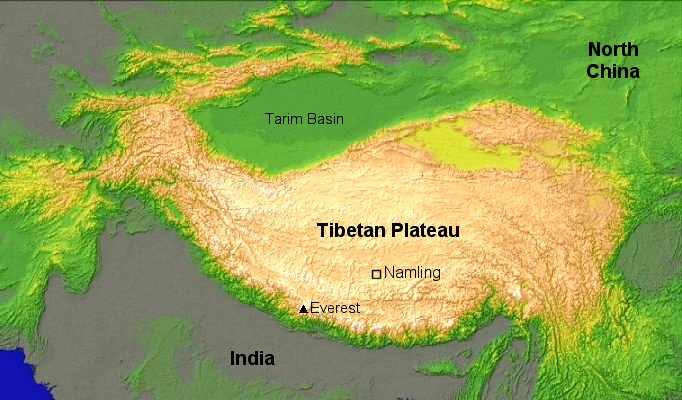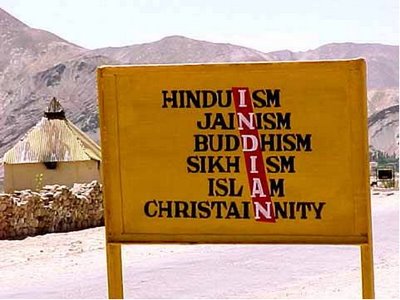Two years ago I saw this documentary on Tibet (via Netflix) –
I was only interested in learning more about it as I had been to Ladakh, in northern India which was widely considered to be a ‘Little Tibet’. It was one of the first ‘heavy’ documentaries I had watched at the time.
The Tibetan story has many dimensions, but first and foremost – their story centers around the Tibetan people.
Tibet has been called the ‘Altar of the earth’, at 14,000 feet above the earth, surrounded by the tallest peaks… legends spoke of a paradise on earth, hidden somewhere behind the great mountains. Guarded to the south by the Himalayas, impenetrable river gorges to the east, and huge expanses of wind-swept desserts across the west and north, the great Tibetan plateau that sharply defines the borders of ethnic Tibet, soars 5 miles into the sky and is the largest geologic feature on earth.
So how did this the Chinese colonization of Tibet start ?
In 1950, a year after the Communists had attained power in China, it invaded tibet – heavy artillery shelling and all… Of course, the Chinese version of this event is ‘Peaceful liberation of tibet’.
Tibet had immense mineral & forest reserves that had a great appeal to China. Superb strategic value, and controlling the high-ground of an area the size of Tibet, you could practically dominate the continent.
Over the months and years that followed this loving invasion, the Tibetans started realizing that their Buddhism meant absolutely nothing to the non-believers, and made several small and large scale protests and uprisings.
The Tibetan national flag, symbolized by protection from the Snow Lion, a mythical beast. ….. has been outlawed in its homeland.
As are any representations of the Dalai Lama.
Adhe Tapontsang, a nun interviewed in the documentary – was in jail for 28 years. And she was one among thousands who have been punished in this manner. She mentions how the Lama (in the mid 1950s, when he was barely into his 20s) was tied with a rope across his mouth, and Chinese officials urinated and defecated on him so people could see how much they cared for religion.
No religion, no God.
The event brought such deep collective shame and sadness among the Tibetans. Monks broke their vows and took up arms to form organized resistance to Chinese aggression against them & their religion. It was no match, and failed miserably – this is the year 1959, when the Dalai Lama decided to take the high risk of escaping from the terror rule in Lhasa and make an attempt to cross the himalayas over to India. The same winter, 87,000 Tibetan civilians were killed by the Chinese as an act of ‘you want to know how it’s done?’
In 1960, the International commission of jurists, an independent human rights organization concluded that China was guilty of genocide in Tibet.
Murder, and arbitrary imprisonment were principal offenses.
The Tibets also suffered because of Mao’s wheat programme; Barley, the staple grain of the Tibetan people – is one of the few crops that actually survive the Himalayan winters.
Mao Zedang, ordered Tibetans to sow wheat instead, which was favored in China at the time. The wheat crop failed in Tibet’s harsh climate.
According to Chinese govt statistics, in some areas of Tibet, nearly 50% of the Tibetan population starved to death. Mao’s disastrous agricultural policies in China at the time lead to the deaths of 30 million people between 1958 and 1961, where 30 is actually the most conservative of numbers from historians, Chinese and otherwise. More than Stalin’s purges & Nazi holocaust combined.
In September 1987, the Dalai Lama was proposing this 5-point peace plan in Washington, and the Chinese in Tibet were blaring this over the loudspeakers, accusing him of being a ’splittist’ (this term goes back a long way in their history) 3 days after these announcements, they executed two tibetan nationals in a stadium, simultaneously hoarding 15,000 people to watch this.
Protests broke out hundreds and thousands of monks on the streets, unarmed, supporting the Dalai Lama, and chanting “Free Tibet”. They were fired at indiscriminately – machine guns and all the other forms of affection such as tear gas, beatings. These were unarmed civilians.
To station their troops, the Chinese have established 658 brothels in Lhasa to serve the needs of military folks. The red-light district lasts about a mile long.
There was (and is) poverty in Tibet, and yes they look forward to the modernization and the development, but don’t want the political repression, violence and cultural destruction that goes with it. They as a people – have no say, no say whatsoever in any decisions that the Chinese take – they are isolated by their language & persecuted openly for it.
Monasteries are run by Chinese policy bureau. Some monasteries are even made into prisons for monks. Between 1994 and 2001, 19,000 monks and nuns had been thrown out of the few monasteries that remain.
In the 1993 paper “Tibet, Proving Truth from Facts“, published by the Tibetan Government in exile in Dharamsala, the Secretary mentions that 1.2 million Tibetans have died as a direct result of Chinese invasion and occupation of Tibet.

[quote]6,254 monasteries that were living repositories of over a millenia of higher Tibetan civilization were destroyed, their treasures were shipped to China or melted down to bullion or bullets, the scriptures were burned, wood was taken from the monasteries to be used for construction military camps.[/quote]
Mostly courtesy of the “People’s Liberation Army” of China.
The documentary goes on to say – “”What looks like 500 year old ruins literally pocking the landscape – they’re not 500 years old, they were destroyed during the cultural revolution. Entire sections of Tibetan communities have been razed to the ground, historic buildings are replaced with Chinese monuments, and department stores.” Less than 2% of the monasteries in Tibet remain. Think about that for a second.
Let’s keep note that the monasteries weren’t just places of prayer & worship – these were their local university centers, their libraries where people would come and read, meet people – these were the core areas of the daily life.
Between early 50s and 70s, the CIA secretly supported a small Tibetan guerrilla warfare operation, principally to harass & taunt the communist Chinese, but that dried up when the US (via the ’great’ Henry Kissinger) wanted more relations with China & was told that the first thing the US would have to do is to stop this funding for the guerrilla nuisance. The US nodded all the way back to DC. Business between the US and China since then is clear for everyone to know firsthand.
So why do the Tibetans want the Chinese to go ?
Its not just about their adult lives, but their children too – even more important for many. In Lhasa, the schools charge $250-400 of tuition per year per child for education (which the Chinese can afford as they either already have the money or they get major subsidies from China to come there and live). This amount is greater than what average Tibetans can *make* in a year. So its a good way of ensuring Tibetan children don’t go to school.
Lhasang Tsering, a member of the Tibetan Resistance Forces says this :
[quote]“We do not ask that the west fight our battles for us, we do not ask that other people sacrifice their self-interest for ours, but I don’t think that it is too much to ask that the western leaders, the United Nations and America live up to the standards they proclaim. We want to be counted among ordinary human beings, who only seek ordinary human rights, the right of all people to be free to determine their future, and yes – there will be problems in Tibet, but we will solve them in our way, and we will not be enemies with China, we could even be friends”[/quote]
The International Herald Tribune has an article today that is titled : Nationalism at core of China’s reaction to Tibet unrest. It starts as follows :
[quote]
“Like so many Chinese, Meng Huizhong was horrified by the violent Tibetan protests in Lhasa. She cringed at videos of Tibetan rioters attacking a Chinese motorcyclist. Her anger deepened as Tibet dominated her online conversation groups until it settled on what might seem like an unlikely target: the Communist Party. “We couldn’t believe our government was being so weak and cowardly,” said Meng, 52, a mother and office worker, who was appalled that the authorities had initially failed to douse the violence. “The Dalai Lama is trying to separate China, and it is not acceptable at all. We must crack down on the rioters.” [/quote]
This goes beyond whatever this person feels. She is but one representation of a Chinese people that have been fed propaganda in the name of nationalismabout Tibet. It’s the regime* that’s to blame – the opinion of Chinese people will depend largely on what the media perpetuates.
It is time.
It is hoped that this time the world will take notice and do something about it. Collective will and aspiration does have a place. No one thought the Berlin wall would ever go down. It is possible, however unlikely it seems, that China cedes Tibet under severe world pressure. It cannot possibly, for its own sake, make war with the rest of the world, though it can certainly be tough with all that money in its coffers.
Hope – there is.
Around the world, thousands of people work in many different ways towards this.
*.. the Chinese in power (not the ordinary people) deserve to be criticized and brought to their knees. Everyone understands that the power & wealth they have accumulated over the last few decades give them unusual leverage. At the core of it all, and beyond even the Tibet problem – is a failure to appreciate the rights and freedom of the Individual – Tibetan or Chinese. It is hoped that eventually this failure will cause massive fractures in the form of State-control that has taken shape in China, and either reform it so completely or face an uprising that snatches for the people the right to independent thought and free speech – rights that we take for granted in most civilized parts of the world.
End of Part I.





